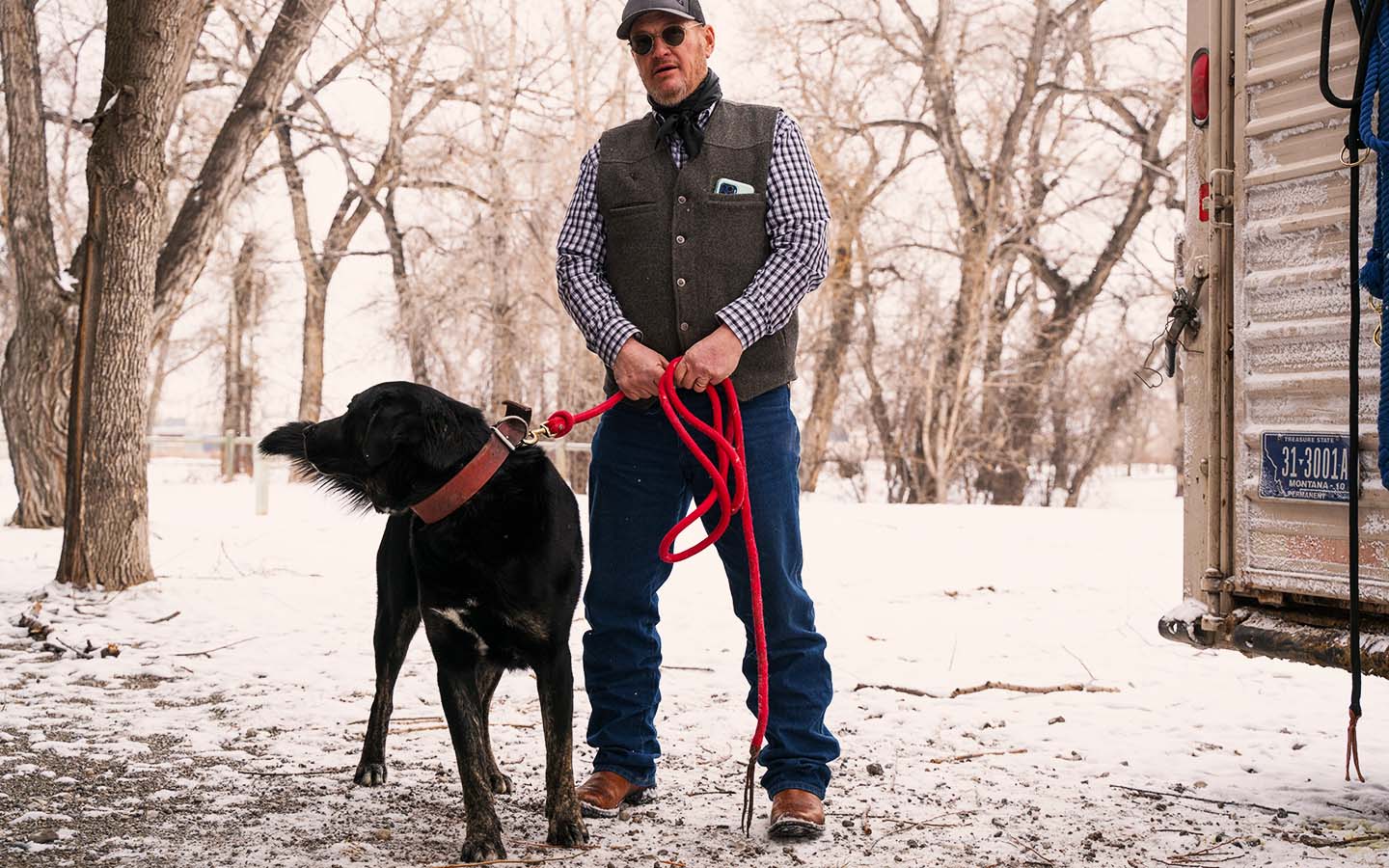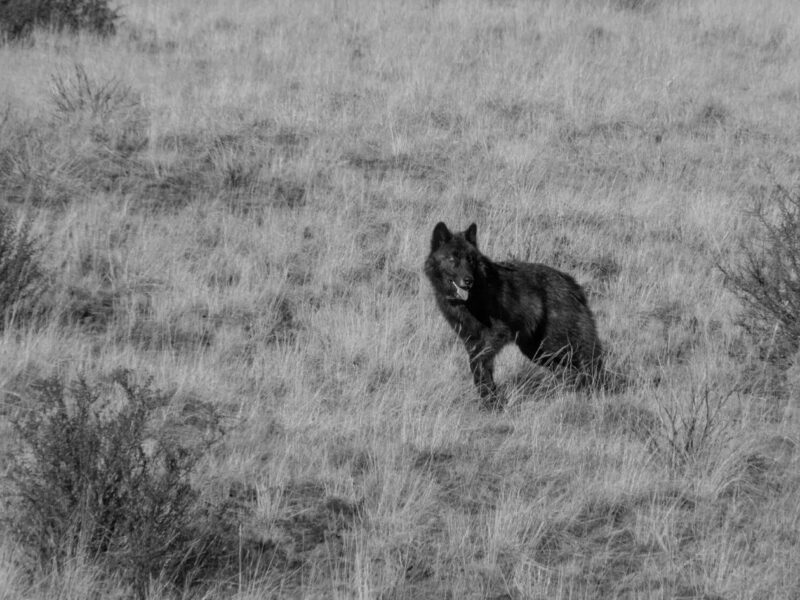Using Dogs to Reduce Conflicts in Rangeland Settings
When it comes to reducing conflicts with wildlife, dogs may just be a landowner’s best friend. Whether protecting human and livestock safety in the yard, pasture or open range, dogs are versatile tools. Different physiological and behavioral traits among breeds create advantages for personal or livestock protection in different settings. Yet, choosing the correct dog breed to fit your specific context and needs can be challenging.
In December, Western Landowners Alliance and the Rocky Mountain Front Ranchlands Group convened ranchers and dog handlers in Choteau, Montana, to share perspectives and knowledge of how dogs are being used to protect life, limb and livestock in working wild landscapes. A summary is below with more information coming on each dog type in future stories.
Pictured above is Steve Skelton, owner of Blackleaf Guardians, with one of his livestock guardian dogs, outside at the event in Choteau, Montana, December 6, 2021. Photo by Matthew Collins.
Guard and Pursuit Dogs
Airedale Terriers and Karelian Bear Dogs (KBDs) are used by landowners and conflict reduction dog-handling specialists as guard and pursuit dogs to protect human safety and pursue wildlife. Pursuit dogs can be used for hunting predators, but in most ranch use cases, pursuit is called off after the predator has been driven away. Despite their bear and mountain lion chasing prowess, KBDs and Airedales are good family dogs, making them well suited to support smaller ranching and farming operations that need an all-purpose utility dog to protect human safety and livestock around the farmstead. Rancher Greg Hertel uses Airedales as a safety-net while hunting in dense grizzly bear country, and to protect the many broiler chickens, small livestock, and cattle close to the ranch house. “You know, these dogs are out all night long, which I can’t really do myself. They know to run off any bears,” said Hertel.
Directed Dogs
Catahoulas and Catahoula crosses (typically with Border Collies) are used to support cowboying and range riding in areas frequented by grizzly bears. Ranchers who spend time working livestock in open range settings and want the added benefit of personal protection may benefit from Catahoula crosses. Amber Mason, who manages livestock at the Ruby Dell Ranch in Montana, prizes Catahoulas for their big bark and strong nose, using them to support everyday work necessary to make a livestock operation tick. “They kind of set this perimeter, where they scout out around us when we are moving fences or cattle,” said Mason.
Livestock Guardian Dogs
In the summer of 2021, Montana Fish Wildlife and Parks wardens surveyed an area of private land for grizzly bears. They found 17. This is where Steve Skelton runs sheep, amongst the hills, breaks and cliffs of the Rocky Mountain Front. Skelton uses a menagerie of Eastern European livestock guardian dog (LGD) breeds, including Turkish Boz, Akbash, Kangals and Komondors, all weighing more than a hundred pounds, to create a nested layer of defense around sheep. Through layering guard dogs and employing electrified night pens for sheep at night, Skelton has dramatically reduced the level of bear conflict on his property. “I haven’t had to call wildlife services in two years,” he says.
Bringing Them Home
If you’re interested in exploring using dogs for predator conflict reduction in your livestock operation, you can read more about Airedale Terriers and Livestock Guardian Dogs (LGDs) in our Guide to Reducing Conflict with Grizzly Bears, Wolves and Elk and here. Learn more about using LGDs from Steve Skelton at Blackleaf Guardians in this video from EweTube. Plus, stay tuned for more from On Land on using dogs and other tactics for reducing conflict between wildlife, livestock and humans.





